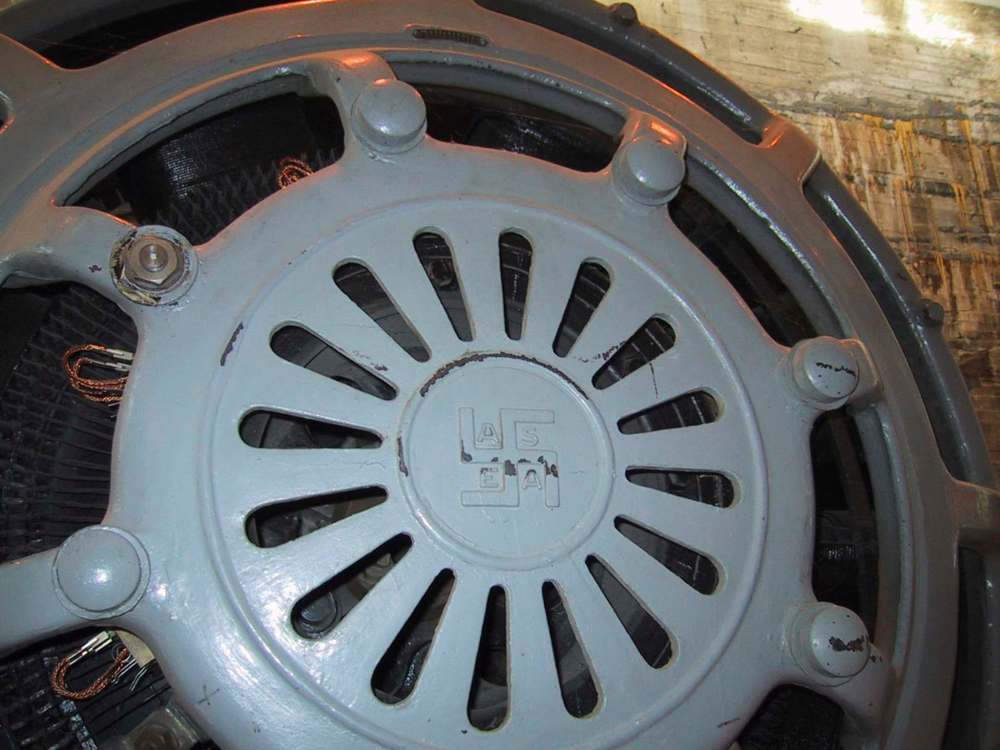Hydro moves to remove swastika logos from old generators
Advertisement
Read this article for free:
or
Already have an account? Log in here »
To continue reading, please subscribe:
Monthly Digital Subscription
$0 for the first 4 weeks*
- Enjoy unlimited reading on winnipegfreepress.com
- Read the E-Edition, our digital replica newspaper
- Access News Break, our award-winning app
- Play interactive puzzles
*No charge for 4 weeks then price increases to the regular rate of $19.00 plus GST every four weeks. Offer available to new and qualified returning subscribers only. Cancel any time.
Monthly Digital Subscription
$4.75/week*
- Enjoy unlimited reading on winnipegfreepress.com
- Read the E-Edition, our digital replica newspaper
- Access News Break, our award-winning app
- Play interactive puzzles
*Billed as $19 plus GST every four weeks. Cancel any time.
To continue reading, please subscribe:
Add Free Press access to your Brandon Sun subscription for only an additional
$1 for the first 4 weeks*
*Your next subscription payment will increase by $1.00 and you will be charged $16.99 plus GST for four weeks. After four weeks, your payment will increase to $23.99 plus GST every four weeks.
Read unlimited articles for free today:
or
Already have an account? Log in here »
Hey there, time traveller!
This article was published 09/04/2019 (2444 days ago), so information in it may no longer be current.
Manitoba Hydro is moving to hide swastika-shaped symbols at two long-running power stations in the province.
They’re part of the logo of a Swedish company that made the generators stationed at Pointe du Bois and Slave Falls more than 100 years ago, before the swastika became associated with Nazism. The Scandinavian electrical engineering firm Allmanna Svenska Elektriska Aktiebolaget (ASEA) had incorporated the now-infamous shape into its initials.
“Their corporate emblem was what we know as a swastika,” said Bruce Owen, spokesman for Manitoba Hydro.

“We’re aware that this symbol is offensive to a lot of people. With that, why wouldn’t we take a step to cover it up?”
The swastika is an ancient symbol that was in use in many cultures for at least 5,000 years before Adolf Hitler made it the centrepiece of the Nazi flag, according to the U.S. National Holocaust Memorial Museum. Its present-day use by certain extremist groups promotes hate, the museum says.
The problematic emblem on Manitoba Hydro’s century-old generators is the approximate size of a laptop computer or a tablet, said Owen.
They had been in view of employees, contractors, and people visiting the Pointe du Bois and Slave Falls power stations — including new Hydro president Jay Grewal, who, in recent weeks, has been touring the Crown utility’s facilities and meeting with employees, said Owen.
The company doesn’t want anyone who sees it to get the wrong impression and wonder why Hydro’s allowing something emblematic of Nazism to be displayed, he said.
The logos will soon be covered up on the ASEA generators — some of which are still working, said Owen.
“There’s stuff at Pointe du Bois that’s more than 100 years old and still producing power,” he said, adding when it breaks down, the utility has had to make parts for repairs.
The machines are still putting out power but not a lot, Owen said.
The giant Limestone generating station (which opened in the early 1990s), located 750 kilometres north of Winnipeg on the Nelson River, produces 1,223 megawatts of power. In comparison, Pointe du Bois — which has been running on the Winnipeg River since 1911 — produces 21 megawatts, said Owen.
The Slave Falls station on the Winnipeg River was constructed in 1930-31.
carol.sanders@freepress.mb.ca

Carol Sanders
Legislature reporter
Carol Sanders is a reporter at the Free Press legislature bureau. The former general assignment reporter and copy editor joined the paper in 1997. Read more about Carol.
Every piece of reporting Carol produces is reviewed by an editing team before it is posted online or published in print — part of the Free Press‘s tradition, since 1872, of producing reliable independent journalism. Read more about Free Press’s history and mandate, and learn how our newsroom operates.
Our newsroom depends on a growing audience of readers to power our journalism. If you are not a paid reader, please consider becoming a subscriber.
Our newsroom depends on its audience of readers to power our journalism. Thank you for your support.

